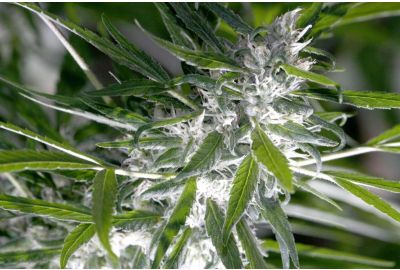Moldy Weed vs. Trichomes: How to Tell the Difference
Have you ever faced a dilemma where you needed to differentiate moldy weed vs. trichomes? It’s not an uncommon confusion; that white stuff on weed can throw off even the most advanced growers!
Luckily, there are several ways to distinguish awful mold formations from the desirable mushroom-like crystals called trichomes. They have distinct differences that can help you confirm what you’re looking at, from visual variations to unique aromas, sounds, and tastes.
Join me as I guide you through the ins and outs of mold and mildew, and how they affect your buds. I’ll also show you how to identify those delicious, THC-packed trichomes.
Ready? Let’s investigate those sparkling buds.
Why is it so easy to confuse moldy weed with trichomes?
Cannabis plants are gorgeous specimens that display an array of structures and colors. Telling moldy buds apart from trichome-packed ones may be easy to confuse because they look pretty similar. They both appear like shiny specks that cover the flowers’ surfaces.
Trichomes are the treasure troves of cannabis plants. They’re where all the sought-after cannabinoids live, including tetrahydrocannabinol (THC) and cannabidiol (CBD). They also have terpenes, which can be psychoactive but primarily give buds their scents and flavors.
Trichomes resemble tiny mushrooms under a microscope, with a thin stalk and a circular bulb on top. They start looking like white snowflakes during the last weeks of cannabis growth.
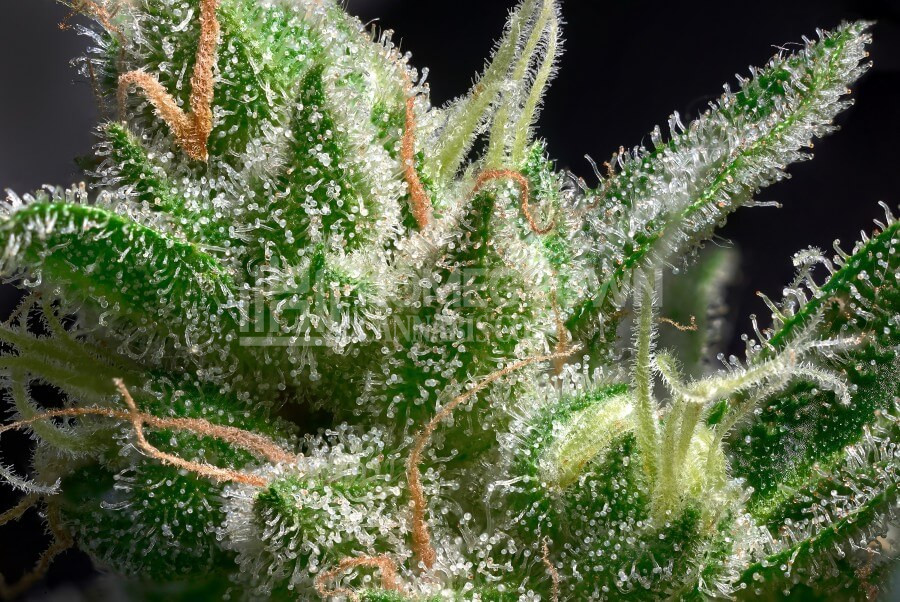
Determining whether your buds have trichomes or mold can be confusing because the latter can also appear white.
Mold can occur for various reasons, including excess moisture, the wrong temperature, or incorrect humidity. It happens when an unstable environment causes breeding conditions for fungi to develop and attack your plants.
Two common mold types include botrytis, which is usually gray, and powdery mildew, which is white. Seeing them on your buds is devastating, but it’s easy to get confused and identify them incorrectly. Closer inspection could reveal that the snowy spots are actually trichomes.
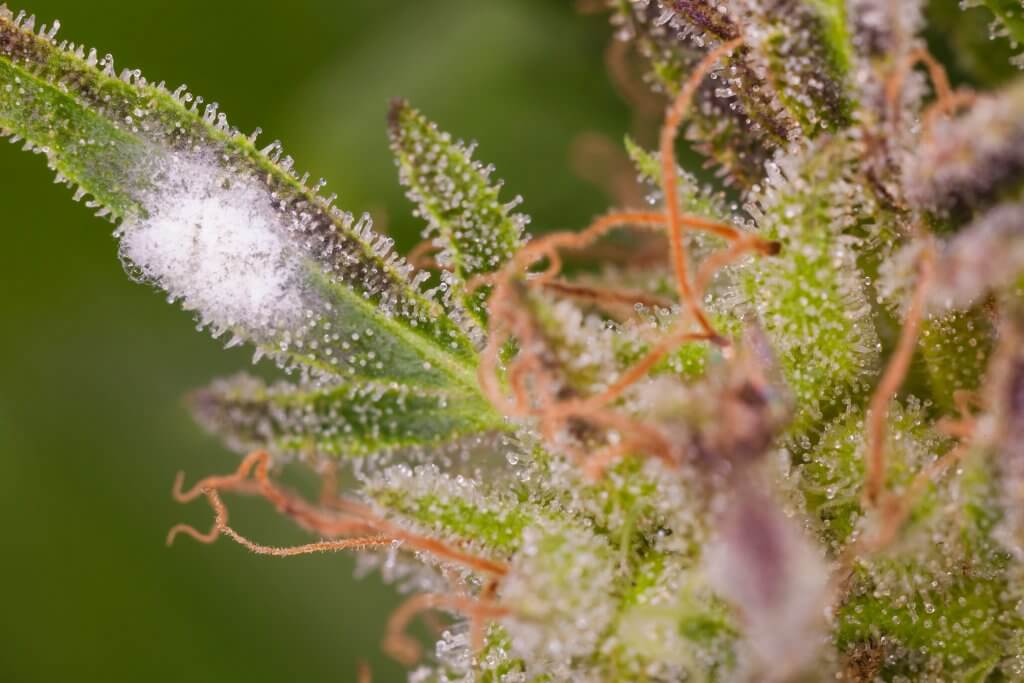
Let’s look at how to tell them apart.
Moldy weed vs trichomes: How to tell the difference between powdery mildew and trichomes
The cannabis plant anatomy consists of many working parts that give buds their magical characteristics. Powdery mildew and other mold can harm vital functions like THC production.
I advise you to learn how to differentiate mold vs. trichomes when growing your plants. Knowing their unique traits can save you from throwing out perfectly healthy buds. It can also help you avoid smoking flowers that cause harsh coughing, sinus pain, nausea, and lung infections.
I’ve listed four primary characteristics to help you spot moldy weed or remove your anxiety if you find healthy trichomes:
Visual difference
Trichomes form as clear, thin structures, like mushroom-shaped teardrops, across the cannabis plant. They appear on females during flowering and give cannabis buds their sticky, glistening texture. You’ll see them turning milky white as they mature.
Powdery mildew doesn’t sparkle like trichomes do. It looks white, but mold can also be black, green, or brown.
Think of old fruit you forgot about. The mold you see appears the same way on cannabis: gray, fuzzy, and hair-like. It almost resembles a closely intertwined spiderweb, unlike trichomes, which have tiny gaps between them.
Mold looks the same as trichomes from a distance. I recommend using a magnifying glass and bright light to inspect your buds. You’ll be able to see the differences more clearly.
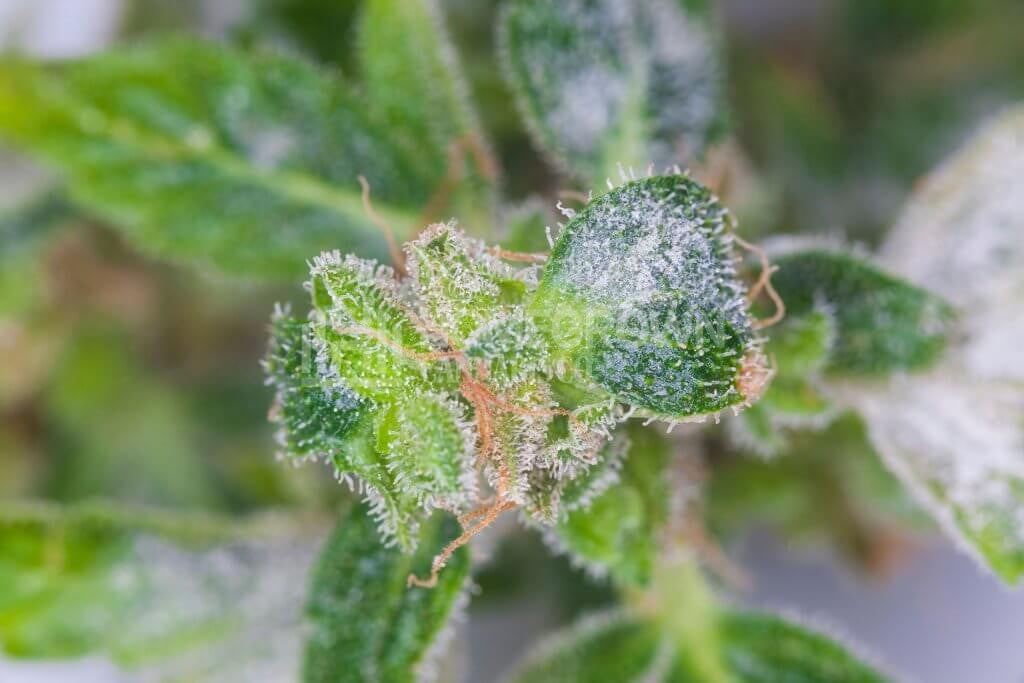
Distinct aroma
I love the smell of good weed in the morning, don’t you?
Scent is a telltale sign for determining whether there’s powdery mildew or trichomes on your buds. The terpenes in healthy cannabis plants exude attractive fragrances, while mold has an unpleasant odor.
I recommend smelling your plants if you’re struggling to inspect them visually. Some fragrances you can expect from the shiny crystals on weed include fruity, herbal, citrus, spice, or pepper. Read up on the strain you’re growing so you know what to expect.
When growing dense nugs, there’s a higher chance of moisture build-up. That’s why it’s important to maintain steady temperature and humidity levels. Mold can form in unstable environments, causing buds to smell like an old, musty basement.
You can usually tell if your cannabis plants have mold if they have a foul, wet hay odor. They smell dusty, old, or excessively earthy and mildewy.
Distinct sound
Another way to tell if your buds are moldy is to listen to them. No, they won’t talk to you, but the sounds they make can help you distinguish between moldy weed and healthy white trichomes.
Healthy nugs resonate with a crisp, subtle crackling sound when you gently rub them or break them apart. They feel sticky, and pulling them apart and grinding them up for a joint is easy.
Moldy buds, however, crumble easily, and you won’t hear that distinct crackle. They require more effort to break up and feel compressed and not as sticky.
Taste test
One alternative method of telling the difference between moldy weed and trichomes is performing a taste test. I don’t recommend it, as mold can cause coughing, nausea, sinus pain, and other health issues if you consume it.
The average cannabis shelf life is long, but mold can reduce quality and cause buds to go bad sooner. They’ll taste rotten, harsh, and foul if you try to smoke them.
Healthy, good-quality nugs taste fresh, flavorful, smooth, and delicious. They shouldn’t cause harsh coughing or leave an unpleasant tang on your tongue.

No more mold, only delicious trichomes
Delicious, healthy buds with bright, cannabinoid-rich trichomes are the goals of all cannabis growers. There’s nothing worse than having to discard your entire crop because of mold development.
Providing a stable environment with ideal conditions can promote healthy, thriving plants. Identifying whether those shiny crystals on your buds are trichomes or mold is easy. The former are bright, sparkling, and sticky, while the latter is old, gray, musty, and tastes rotten.
Throw away your buds if they have unpleasant scents and you confirm mold growth. It’s not healthy to consume them at this point.
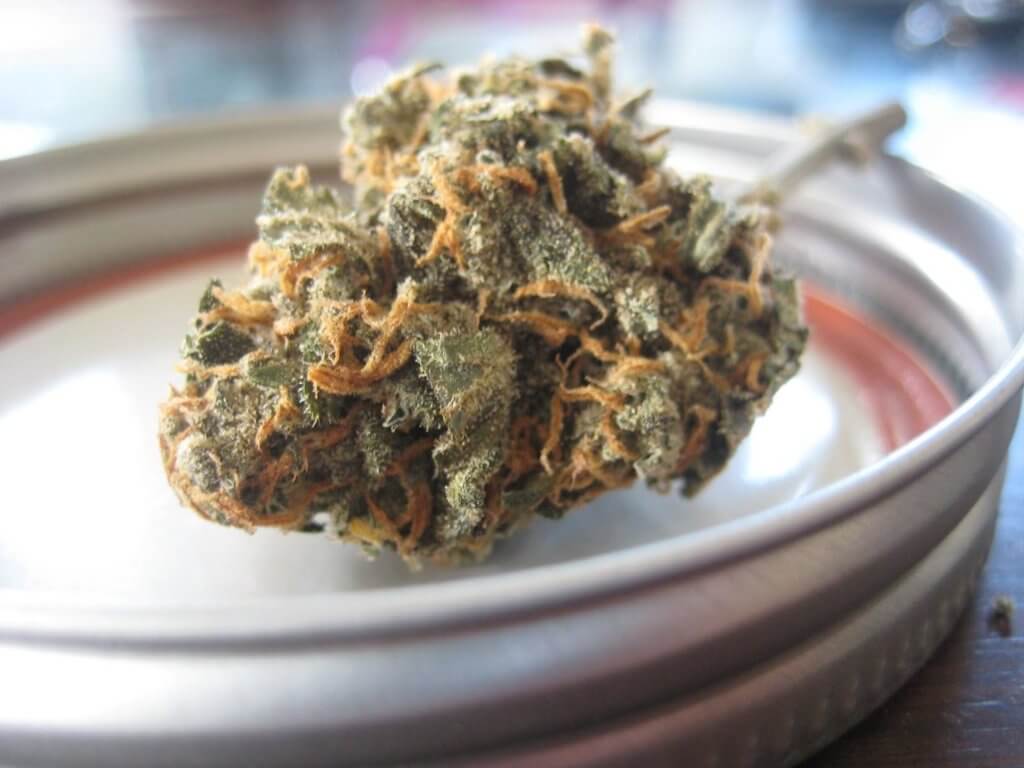
Get your cannabis seeds from Homegrown Cannabis Co. for high-quality strains that are more resistant to mold and diseases. You’ll be consuming tasty buds in as little as three to six months.
